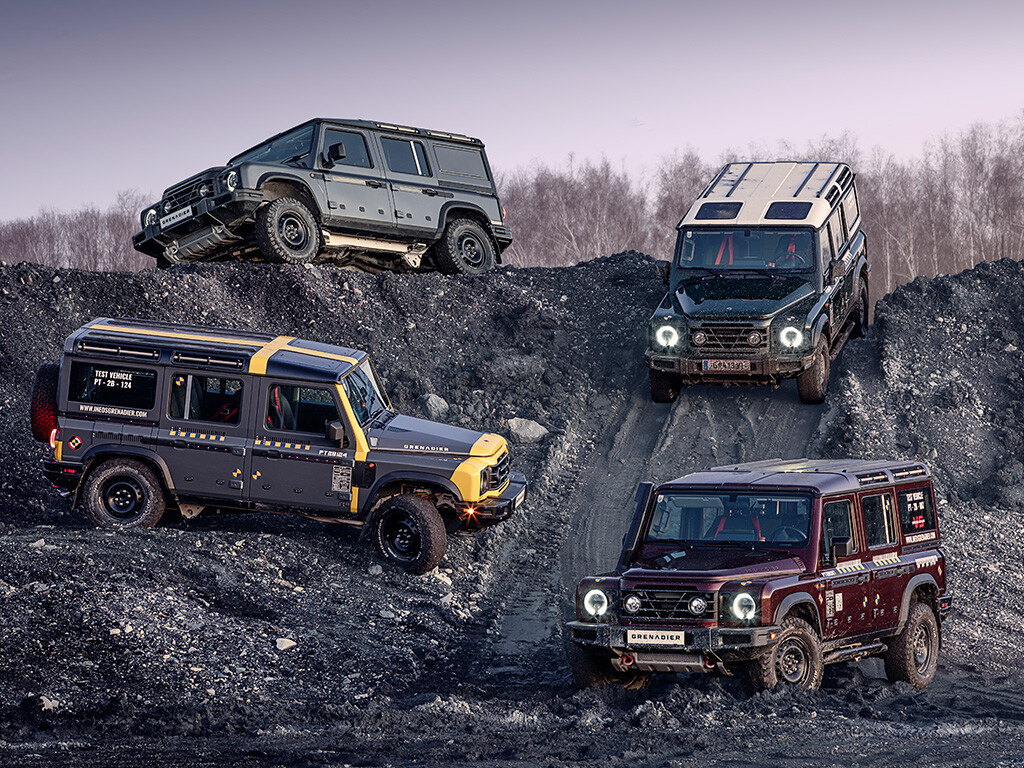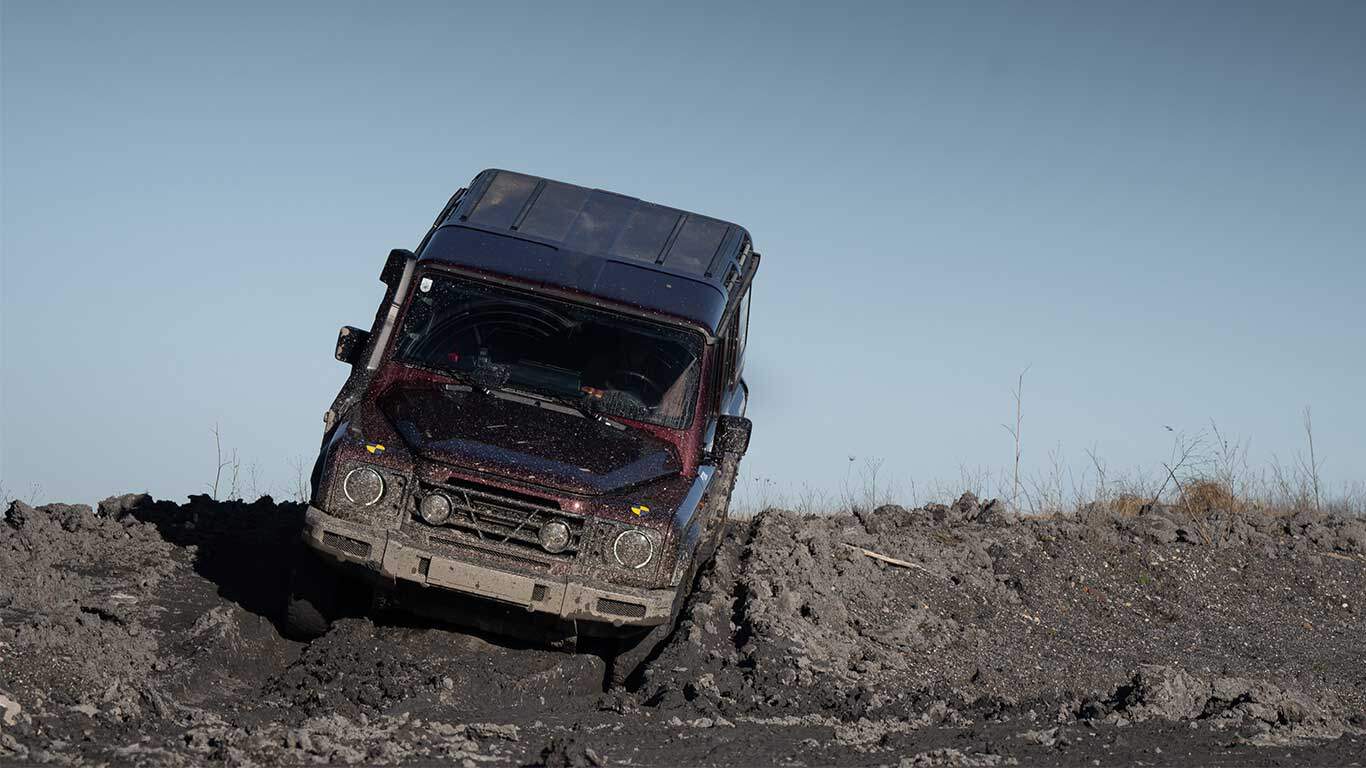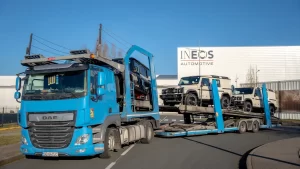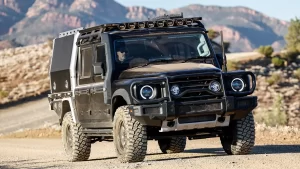Approaching the Grenadier (from the driver’s side for a change), its boxy silhouette and flat windscreen cast a familiar shadow on the ground. Climbing up into the cockpit and settling into the driving seat, my eyes dwell briefly upon the flat front wing tops and the clamshell bonnet. Déjà-vu? We’ll see.
The car I am looking at today is still a prototype, but is pretty close to what we can expect to see coming off the production line in Hambach, France, later this year.
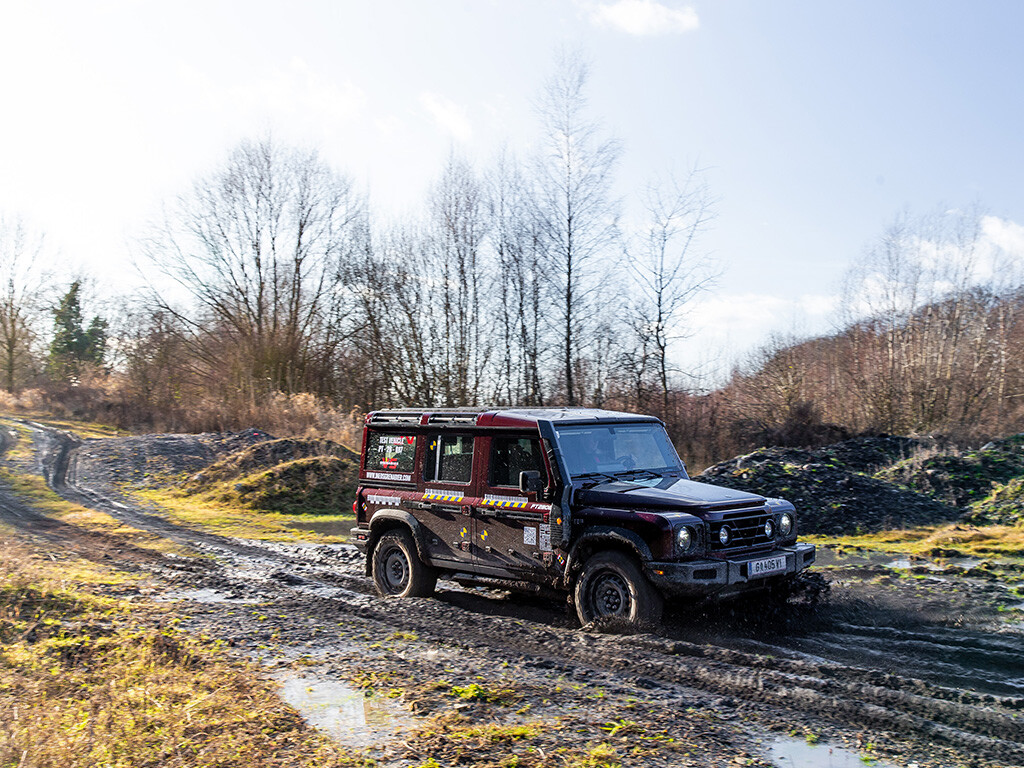
INGREDIENTS
Before venturing onto the mud, let me briefly recap: when production of the original Defender ceased in 2016, Sir Jim Ratcliffe, CEO of INEOS and accomplished adventurer, identified a void in the market for an uncompromising utility vehicle. During the ensuing five years, Dirk Heilmann, CEO of the newly formed INEOS Automotive, invited industry leaders to collaborate in the development of what the company describes as its Built-on-Purpose 4×4.
Significant players in the project include:
- Gestamp – ladder frame chassis
- Carraro – beam axles
- BMW – diesel and petrol engines
- ZF – 8-speed gearbox
- Tremec – two-speed transfer case delivering permanent all-wheel-drive
- Magna – to oversee development and to produce the initial prototypes
The core bodywork is a steel construction with hang-on panels such as the roof, wings, and doors, made from aluminium.
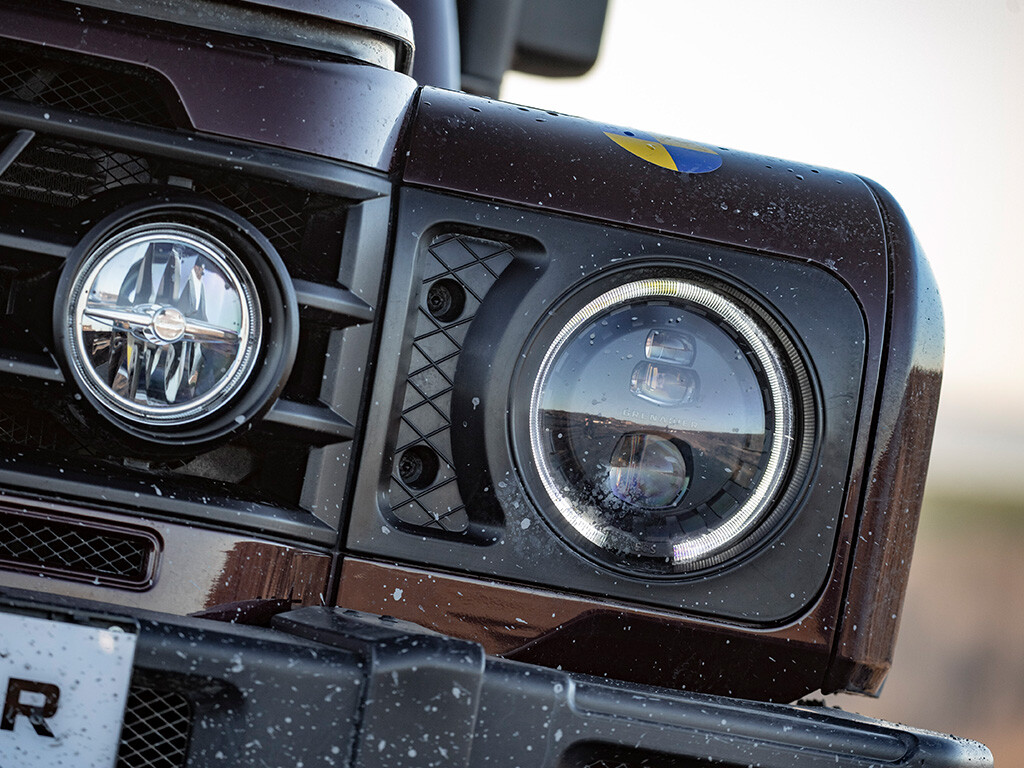
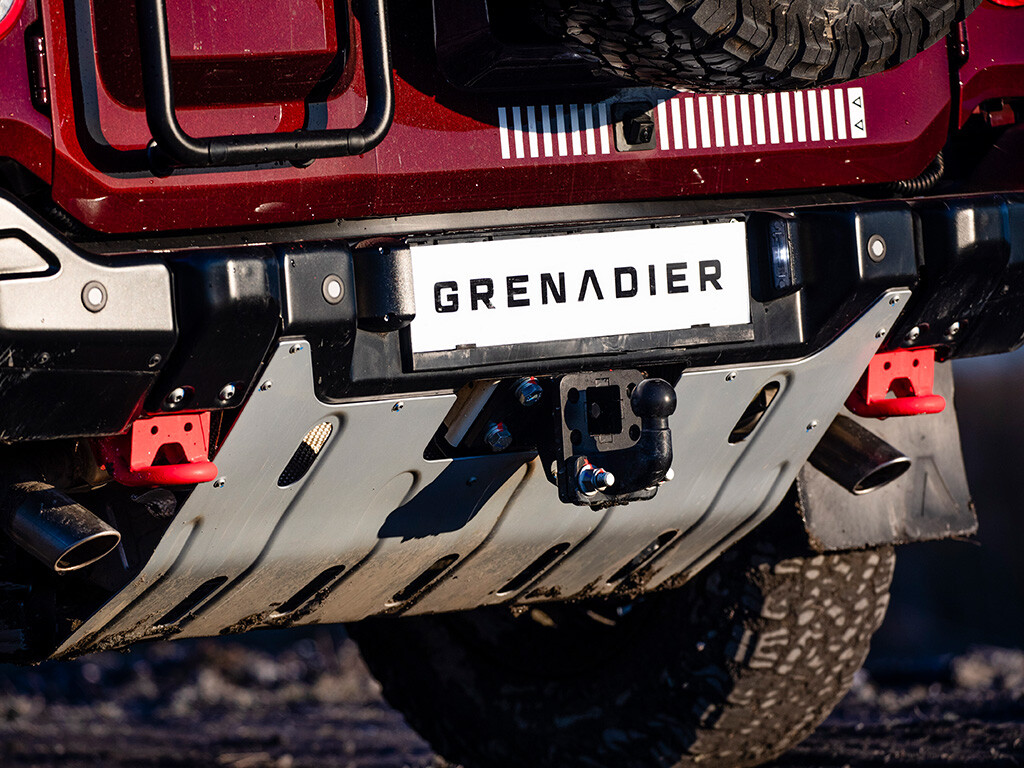
BACK IN THE MOMENT
Acclimatising myself in this new interior after manually adjusting the Recaro seat (you’ll search in vain for unnecessary electronic luxuries), the first thing that struck me was how spacious the interior is. The door and B-pillar are not trying to impose themselves and rob the driver of freedom of movement. Instead, I am sitting centrally behind the steering wheel and there is a comfortably positioned ledge at the bottom of the door window upon which I can rest my left elbow.
The dashboard, comparatively shallow in modern terms, contributes to the general interior spaciousness and its landscape is practical. A large touchscreen in the centre provides the driver with relevant information. The extended control panel which starts with a large selector dial between the front seats, to navigate through the on-screen menus, sweeps up through the dashboard with day-to-day functions such as hazard lights, air-conditioning and audio, and ends in the roof where the driver and front passenger have easy access to the off-road and auxiliary equipment controls.
The driving position gives a clear view of the vehicle’s forward perimeter. The leading corner of each wing defines the car’s width and length. The generous door mirrors provide a line of sight along the sculpted waist to the vertical rear. There are short overhangs front and rear for the best possible approach and departure angles.
Low ratios engaged. Central diff-lock engaged. Off-road mode selected from the overhead panel (which limits all electronic functions to the bare necessity for travel off-pavement). Drive selected. It’s time to move off.
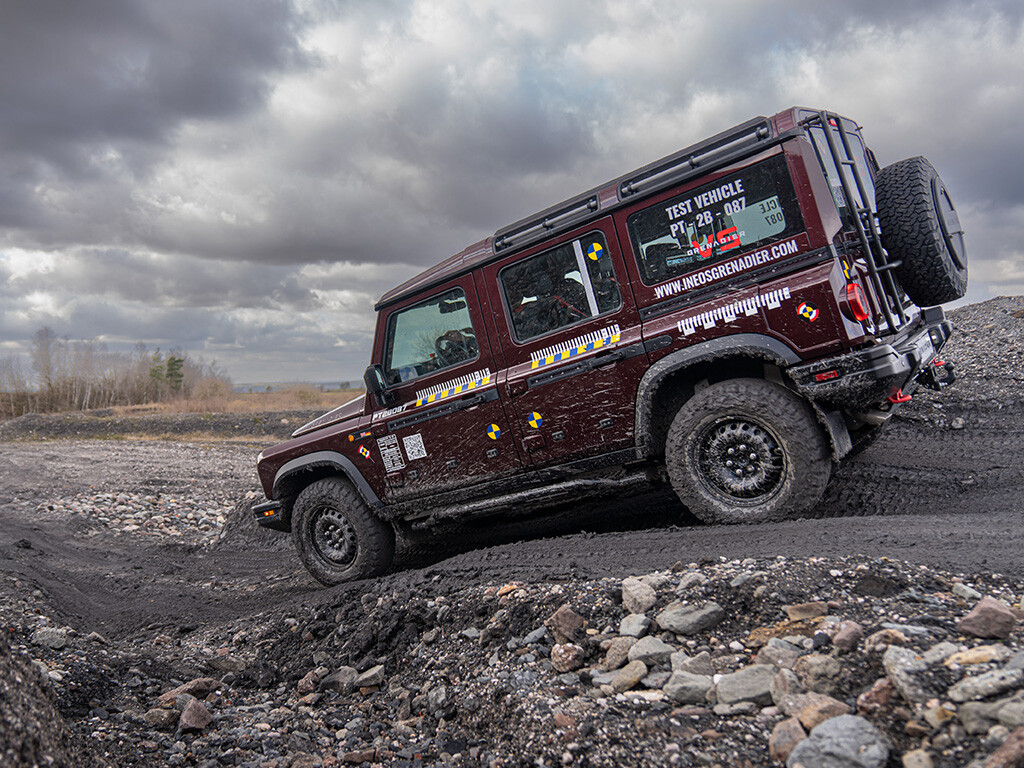
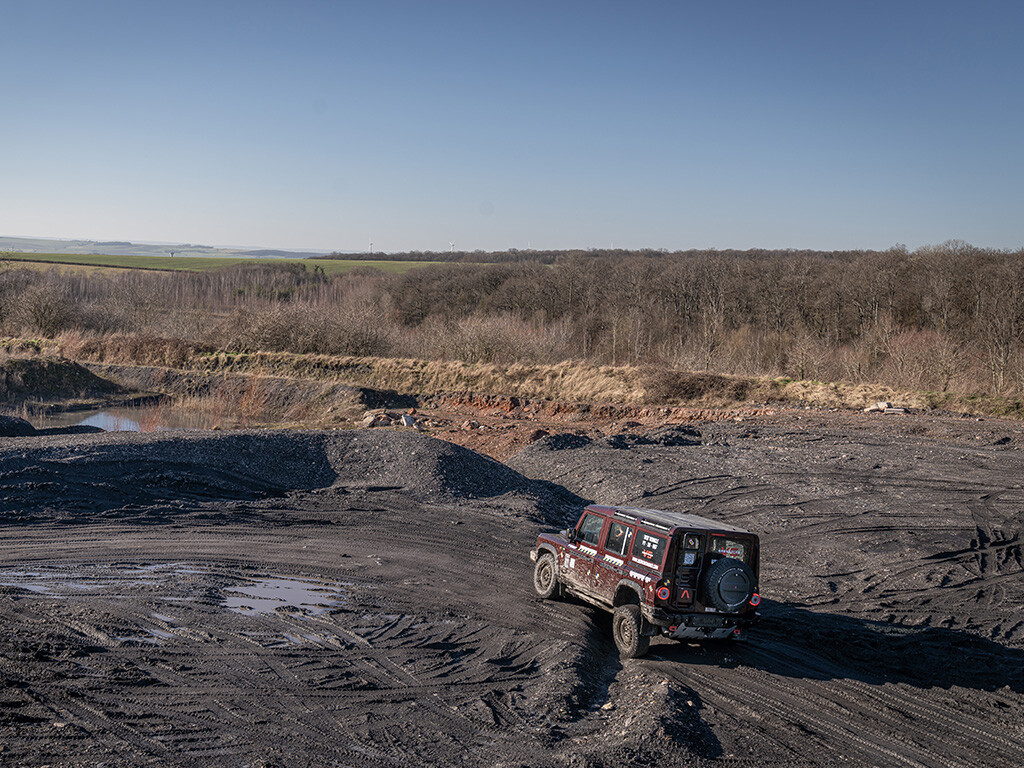
DRIVING IMPRESSION
Rain had plagued the region for the days prior to the test drive, so the ground was soft and the Grenadier drew deep furrows in the mud. Shod with BFGoodrich All-Terrain tyres, it was still difficult to plant the BMW’s torque without the wheels spinning and the slippery surface made the steering feel exceptionally light. Having said that, the engine and gearbox harmonise perfectly. Gear changes are silky smooth and the torque deliverance, which begins early in the rev range, is continuous.
Without the option of complex air suspension, the Grenadier sits on progressive coil springs at each corner which fulfil their tasks to provide maximum ground clearance, ensure good axle articulation and keep all four wheels on the ground for maximum traction.
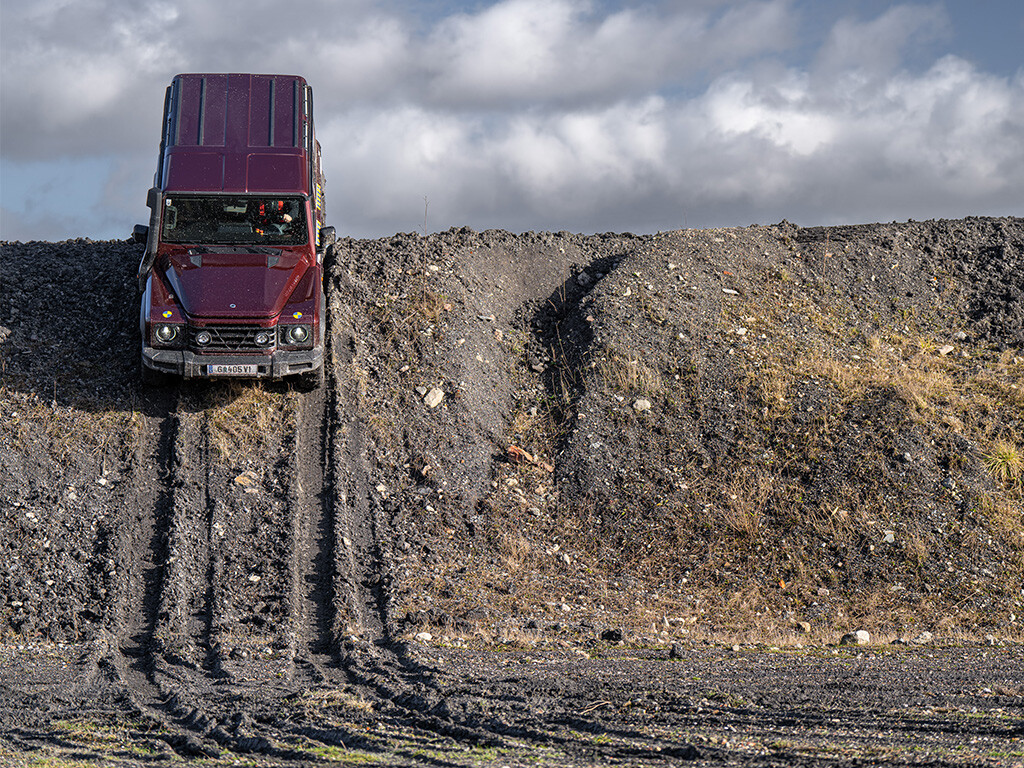
There were times when the optional front and rear diff-locks would have been beneficial for some slippery ascents. Steep descents, on the other hand, were simply a case of using low first gear, steering the Grenadier over the brow and letting the car make its own sure-footed way down.
VERDICT
INEOS set out to build a hardcore off-roader. A 4×4 that will be in its element in a professional working environment and one that will cope with the challenges of remote and inhospitable regions.
The result is a modern, comfortable, spacious utility vehicle that has the power and technology to do precisely what it says on the label. Yes, it is a workhorse, but the Grenadier is also hellishly fun to navigate through challenging terrain.
After this first encounter with the Grenadier, does it possess what it takes to meet expectations and fill the current void in the utility vehicle market? Yes, it does.
Is the Grenadier a contender for ambitious vehicle supported travel? After these first impressions, yes it is.
Now we just have to be patient until a production two-seater commercial becomes available later this year and we can embark on a longer, in-depth on and off pavement test under realistic overlanding conditions.

SPECS
Diesel Engine: inline 6-cylinder, 3000 cc, 186 kW / 250 BHP / 500 Nm
Petrol Engine: inline 6-cylinder, 3000 cc, 211 kW / 283 BHP / 459 Nm
Net weight: approx. 2.500 kg
Gross weight: 3.500 kg
Ground clearance: 264 mm
Wading depth: 800 mm
Initially available either as a 110 five seater station wagon or two seater commercial.
PRICE
Starting at € 59.000 in Germany
INEOS AUTOMOTIVE | INEOSGRENADIER
